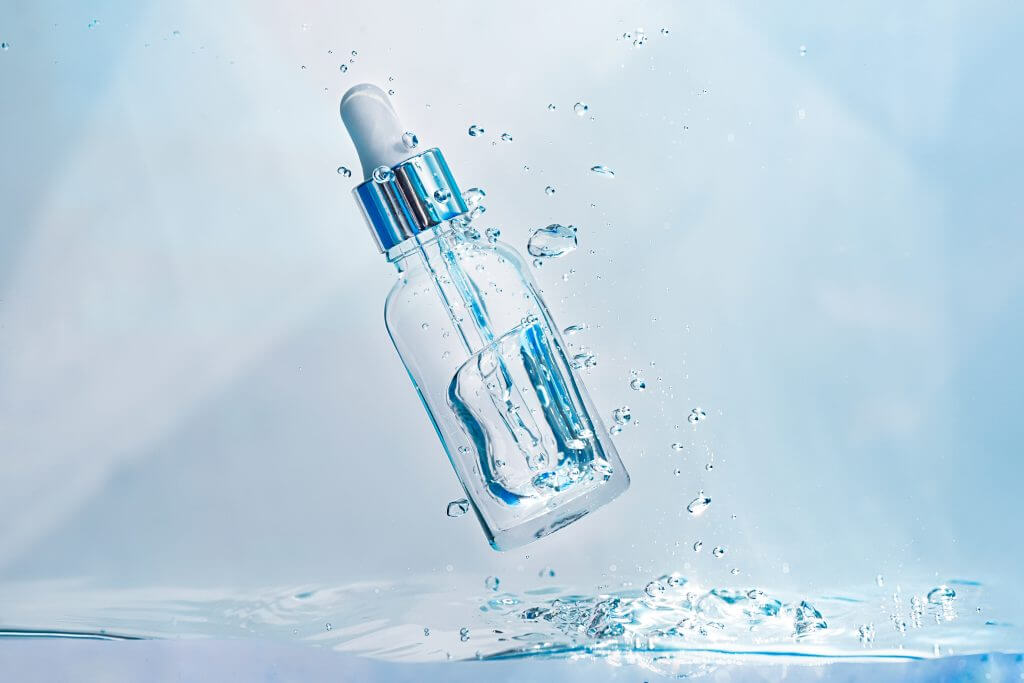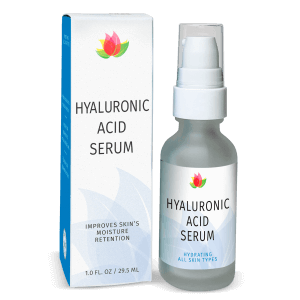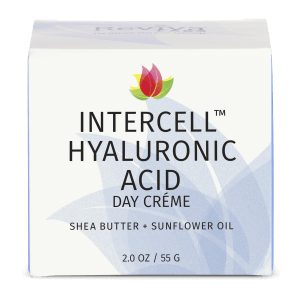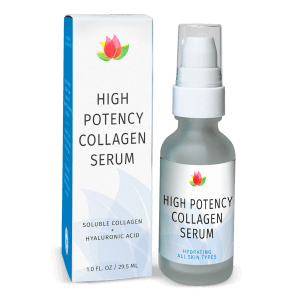Ingredients, Reviva Labs, Skin Care
Understanding the Differences Between Hyaluronic Acid and Sodium Hyaluronate
Hyaluronic acid has become a buzzword in the skincare industry, renowned for its hydrating properties and ability to improve skin texture. However, its close relative, sodium hyaluronate, often appears in ingredient lists as well. Understanding the differences between these two compounds can help you make informed choices about the products you use.
Hyaluronic Acid: The Hydration Powerhouse
Hyaluronic acid is a naturally occurring substance found in the human body, primarily in the skin, eyes, and connective tissues. Its primary function is to retain water, keeping tissues well-lubricated and moist. This molecule can hold up to 1,000 times its weight in water, making it a key ingredient in many skincare products aimed at hydrating and plumping the skin.
The structure of hyaluronic acid allows it to form a flexible, gel-like barrier on the skin, which helps to prevent moisture loss. This is why it is commonly found in serums, moisturizers, and even some facial masks. Its large molecular size, however, means that it sits on the surface of the skin rather than penetrating deeply.
Sodium Hyaluronate: The Skin Penetrator
Sodium hyaluronate, on the other hand, is a salt derivative of hyaluronic acid. It is created by binding sodium to hyaluronic acid, which results in a smaller molecular size. This smaller size allows sodium hyaluronate to penetrate the skin more deeply, delivering hydration to the lower layers of the epidermis.
This deeper penetration means that sodium hyaluronate can provide more substantial and long-lasting hydration compared to hyaluronic acid. It is also more stable and less likely to oxidize, making it a preferred ingredient for many formulators.
Molecular Size and Skin Absorption
The molecular size of these two compounds plays a significant role in their effectiveness. Hyaluronic acid, with its larger molecules, remains on the surface of the skin, providing immediate hydration and forming a protective barrier. This can be particularly beneficial for dry or damaged skin that needs a quick moisture boost.
Sodium hyaluronate’s smaller molecules allow it to penetrate deeper, hydrating from within and supporting the skin’s natural moisture balance. This can lead to improved elasticity and a reduction in the appearance of fine lines and wrinkles over time.
Benefits of Hyaluronic Acid and Sodium Hyaluronate in Skincare
Both hyaluronic acid and sodium hyaluronate offer unique benefits for the skin. When used together in a skincare regimen, they can provide comprehensive hydration and protection. Here are some of the key benefits:
- Hydration: Both ingredients are highly effective at drawing moisture into the skin, which can help to keep it soft, smooth, and supple.
- Plumping Effect: By hydrating the skin, these ingredients can help to plump up the skin, reducing the appearance of fine lines and wrinkles.
- Improved Skin Texture: Regular use of products containing these ingredients can lead to smoother, more even skin texture.
- Enhanced Absorption: Sodium hyaluronate can help other active ingredients penetrate deeper into the skin, enhancing their effectiveness.
Clinical Evidence and Efficacy
Numerous studies have demonstrated the efficacy of both hyaluronic acid and sodium hyaluronate in skincare. One study published in the Journal of Clinical and Aesthetic Dermatology found that a formulation containing sodium hyaluronate significantly improved skin hydration and elasticity after four weeks of use.
Another study highlighted in the Dermatologic Surgery journal showed that topical application of hyaluronic acid could improve skin hydration and reduce wrinkles, with visible results after just a few weeks.
Choosing the Right Product for Your Skin
When selecting skincare products, it’s essential to consider your skin type and specific needs. For those with dry or sensitive skin, products containing hyaluronic acid might be more beneficial due to their ability to provide immediate hydration and form a protective barrier on the skin’s surface.
For individuals looking to address deeper skin concerns, such as fine lines, wrinkles, or loss of elasticity, products with sodium hyaluronate can offer more substantial benefits. Its ability to penetrate deeper layers of the skin makes it ideal for anti-aging treatments.
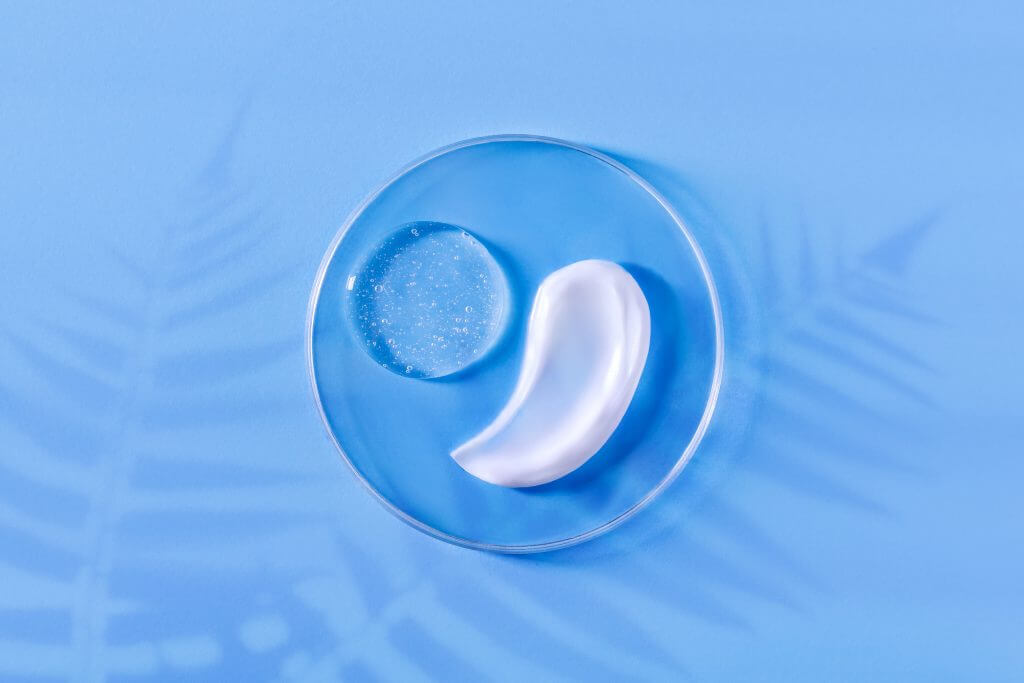
Formulation and Product Types
Skincare products often combine hyaluronic acid and sodium hyaluronate to maximize their hydrating and anti-aging benefits. These ingredients can be found in various formulations, including serums, creams, lotions, and masks.
- Serums: These are typically lightweight and fast-absorbing, making them ideal for layering under other products. Serums with sodium hyaluronate can penetrate deeper into the skin, providing long-lasting hydration.
- Creams and Lotions: These products often contain hyaluronic acid to deliver surface hydration and create a barrier that locks in moisture. They are suitable for daily use and can be especially beneficial in drier climates.
- Masks: Hydrating masks that include both hyaluronic acid and sodium hyaluronate can provide an intensive moisture boost, perfect for use once or twice a week.
Incorporating Hyaluronic Acid and Sodium Hyaluronate into Your Routine
To get the most out of these hydrating ingredients, it’s essential to use them correctly. Here are some tips for incorporating hyaluronic acid and sodium hyaluronate into your skincare routine:
- Cleanse First: Always start with a clean face to ensure that your skin can fully absorb the products. Use a gentle cleanser that doesn’t strip your skin of its natural oils.
- Layering: Apply serums containing sodium hyaluronate first, as they can penetrate deeper. Follow with a moisturizer that contains hyaluronic acid to lock in hydration and create a protective barrier.
- Frequency: These ingredients are generally safe for daily use. Adjust the frequency based on your skin’s needs and the product’s instructions.
- Complementary Ingredients: Pair hyaluronic acid and sodium hyaluronate with other hydrating ingredients like glycerin, ceramides, and peptides for enhanced benefits.
Myths and Misconceptions
Despite their popularity, there are several myths and misconceptions surrounding hyaluronic acid and sodium hyaluronate. One common myth is that these ingredients can cause skin to become dependent on them, leading to reduced natural hydration. However, there is no scientific evidence to support this claim. In fact, regular use can improve the skin’s natural ability to retain moisture over time.
Another misconception is that all hyaluronic acid products are the same. In reality, the concentration, molecular size, and formulation can vary widely between products, affecting their efficacy. It’s important to choose products from reputable brands and read ingredient labels carefully.
Final Thoughts on Hyaluronic Acid and Sodium Hyaluronate
Understanding the differences between hyaluronic acid and sodium hyaluronate can help you make more informed choices about your skincare routine. Both ingredients offer unique benefits and can work together to provide comprehensive hydration and anti-aging effects. Whether you’re looking to improve skin texture, reduce fine lines, or simply keep your skin hydrated, incorporating these ingredients into your regimen can help you achieve healthier, more radiant skin.



